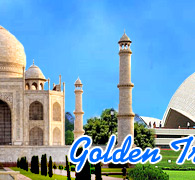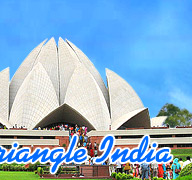Bangalore, Bangalore India, Bangalore Travel, Bangalore Tours, Tourism in Bangalore, Bangalore Tour Packages, Bangalore Tourism.

The
capital of Karnataka, Bangalore is the seventh largest city in India.
Acity of contradictions, at one end, the Garden City is close to nature
with its numerous beautiful gardens and parks and at the other end, this
Silicon Valley is at par with the latest developments of the world.
Though the origin of Bangalore is ancient, the present-day city was
founded in the 16th century and has since continued to be an important
administrative center. Bangalore city has some historical sites of
immense interest too.
According to a legend, the city of Bangalore is named the native
translation of 'boiled beans' that an old woman offered to a hungry and
lost Hoysala ruler. Kempegowda, a local chief, laid the foundations of
the present-day city in the early 16th century, by building a small mud
fort here. It gained prominence in the 18th century, when Hyder Ali and
Tipu Sultan of Mysore made it an important fort city during their
skirmishes with the mighty British. The British at last crushed Tipu
Sultan with an iron hand and took over Bangalore city. In 1831, they
made it the regional administrative city and established a big military
cantonment here.
Shopping Attractions:
Bangalore is a good place to purchases silk, sandalwood and rosewood items, and
Lambani tribal jewellery. The most pleasant shopping experience is to be
found on Commercial St, north of Mahatama Gandhi Road. This street is
home to a number of silk, handicraft and shops. Residency Road is a good
place for handicrafts while one may also opt for items like granite
carvings, paintings on raw silk, applique goods and silver filigree.
Vegetable-dyed and hand-embroidered garments and home décor
products in typical Gujrati style can be bought from Bangalore as well
as the Tanjore art plates, bronze showpieces, black metal items and
semi-precious jewelry from Tamil Nadu. Raw silks, dokra metal work,
beadwork and footwear of Madhya Pradesh can also be bought from here.
The top end of the market consists of high fashion boutiques where all
the major fashion designers in India are well represented. A shopper's
paradise, Bangalore has more shops per sq. km. than anywhere else in
India. The Brigade Road area has everything pleasurable to young hearts
including discotheques, bowling alleys, pubs, video game parlors and
cyber cafes.
Prime Attractions:
Cubbon Park:
In 1864, Lord Cubbon, the then viceroy of India, laid out 300 acres of
an oasis of greenery in the heart of modern Bangalore. This beautiful
park is highly popular with walkers, joggers and nature lovers for its
tranquility and the natural beauty of the park complimented by the red
Gothic structures of the State Central Library and the High Court. The
library is worth a visit for its rare treasure of books, Its building
has architectural style of stone and fluted pillars with walls finished
in lime plaster. Cubbon Park houses a variety of flora along with
institutions of significance like the Cheshire Dyer Memorial Hall,
Ottawa Chatter, Museum, Century Club and the Press Club.
Lalbagh Gardens:
The present day Lalbagh was once a small fruit orchard during the times
of Hyder Ali. Later, Tipu Sultan introduced exotic trees such as
Cypress, Thuja, Junipers, Grapes, Guavas, Raspberries and Strawberries
and other European flora and expanded the garden. The period of John
Cameron is often referred to as the 'Golden Era' of plant introductions
of this royal retreat. A number of fruits, vegetables, spices, medicinal
plants and aromatic plants were grown during his times. He also built
the Lalbagh Glass House for displaying the flora, which was made of
imported parts from England and was completed within just 12 hours of
laying its foundation. Today, Lal Bagh houses the offices of the
Karnataka Horticultural Society that renders free advice to those
interested in flowers and gardens and a giant Electronic Quartz Flower
clock.
Vidhana Soudha:

This
imposing edifice built almost entirely of dressed Bangalore granite is a
tribute to Temple architecture. It houses the Legislative Chambers of
the state government. It is 46 meter high and one of the Bangalore's
most important buildings. Mr. Kengal Hanumanthaiah the then chief
minister of Mysore decided to construct the Vidhana Soudha entirely
along Indian style of architecture. It has four domes on all the four
corners and the four-headed lion, the symbol of Indian sovereignty,
overshadows the main entrance. It houses 22 departments and 300 rooms.
Jawahar Bala Bhavan:
Children's amusement park and recreation center, the main attractions
of the place are the toy train, which moves along the delightful pathway
of the Cubbon Park and the Dolls museum. It also houses a 20 million
year old fossilized tree, which was gifted to it by the Geological
Survey of India.The Bhavan has boating facility and a small fair ground
too. Children's film shows and theatre performances are regularly held
at the Vijayaranga Theatre.
The Fort:
Situated opposite the City Market, the Fort was originally built in mud
by Kempe Gowda in 1537. The Fort was extended and fortified by Tippu
Sultan. It is noted for the beautifully carved Islamic-style arches on
the gate walls, and for the well-preserved Ganapathi Temple, a testament
of the religious tolerance of Tipu Sultan, within its precincts. One of
the temple's outer walls carries an exquisite carving of Sri Krishna
playing his flute.
Tippu's Palace:
Situated near the fort, construction of this palace was begun by Tippu
Sultan's father Haider Ali, and completed by Tippu himself in 1791. It
resembles the Daria Daulat Palace at Srirangapatna, Tipu's capital. It
was known as `Rashk-e-jannat' - the Envy of Heaven. Constructed largely
of wood, it is known for the five elaborately decorated arches
surmounted by exquisite minarets, and paintings on the walls and
ceilings.
Indian Institute of Science:
Founded by the Tatas, this premier science institute has been the
research place of many famous Indian scientists including the Nobel
Prize winner C.V. Raman and space scientist Vikram Sarabhai. Its stately
buildings are in classic European style, with a central quadrangle
decorated with attractive Persian motifs. On February 1, 1911 Krishna
Raja Wodeyar, Maharaja of Mysore, laid the foundation stone of the grand
main building. The Institute has 22 departments of various branches of
science, and a collection of over 2,68,000 books.
Government Aquarium:
The Govt. Aquarium is housed in an octagonal building, enhancing the
beauty of Cubbon Park. It exhibits the largest number of indigenous and
exotic, cultivable as well as ornamental pet fish. The Hocks stick, the
Pearl Coushmi, the India Tiger Borb, the Moon Tail, as well as edible
fish welcome the visitor. The Aquarium provides food for thought, but if
you want to taste the fish, there is a fish stall here.
Gandhi Bhavan:
The Gandhi Smarak Nidhi, which is housed in the Gandhi Bhavan (Kumara
Krupa Road), seeks to propagate the life and teachings of Gandhiji. The
Gandhi Smarak Nidhi has organized a comprehensive picture gallery
depicting Gandhiji's life in pictures from early childhood to the last
day. Photostat copies of letters written by him to various personalities
of his day can also be seen.
Bangalore Hotels:
ITC Sheraton Bangalore -
Hotel Capitol -
3 Star Hotels in Bangalore
How To Reach
 The
capital of Karnataka, Bangalore is the seventh largest city in India.
Acity of contradictions, at one end, the Garden City is close to nature
with its numerous beautiful gardens and parks and at the other end, this
Silicon Valley is at par with the latest developments of the world.
Though the origin of Bangalore is ancient, the present-day city was
founded in the 16th century and has since continued to be an important
administrative center. Bangalore city has some historical sites of
immense interest too.
The
capital of Karnataka, Bangalore is the seventh largest city in India.
Acity of contradictions, at one end, the Garden City is close to nature
with its numerous beautiful gardens and parks and at the other end, this
Silicon Valley is at par with the latest developments of the world.
Though the origin of Bangalore is ancient, the present-day city was
founded in the 16th century and has since continued to be an important
administrative center. Bangalore city has some historical sites of
immense interest too. 







 This
imposing edifice built almost entirely of dressed Bangalore granite is a
tribute to Temple architecture. It houses the Legislative Chambers of
the state government. It is 46 meter high and one of the Bangalore's
most important buildings. Mr. Kengal Hanumanthaiah the then chief
minister of Mysore decided to construct the Vidhana Soudha entirely
along Indian style of architecture. It has four domes on all the four
corners and the four-headed lion, the symbol of Indian sovereignty,
overshadows the main entrance. It houses 22 departments and 300 rooms.
This
imposing edifice built almost entirely of dressed Bangalore granite is a
tribute to Temple architecture. It houses the Legislative Chambers of
the state government. It is 46 meter high and one of the Bangalore's
most important buildings. Mr. Kengal Hanumanthaiah the then chief
minister of Mysore decided to construct the Vidhana Soudha entirely
along Indian style of architecture. It has four domes on all the four
corners and the four-headed lion, the symbol of Indian sovereignty,
overshadows the main entrance. It houses 22 departments and 300 rooms.



